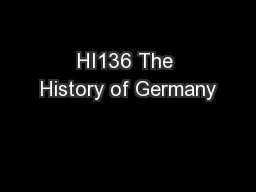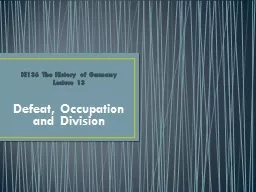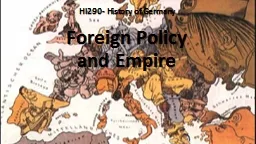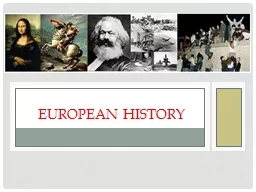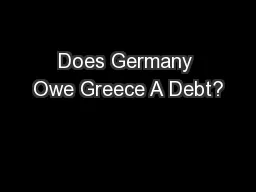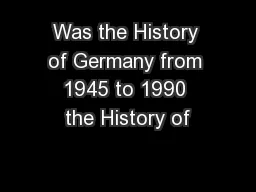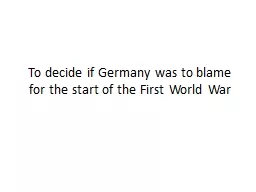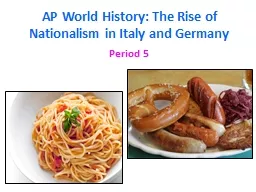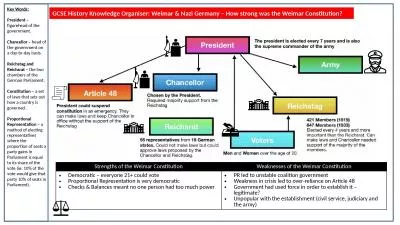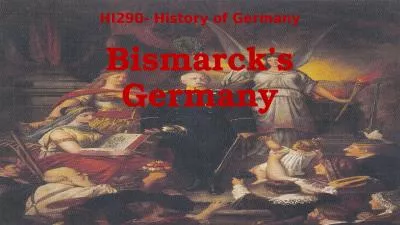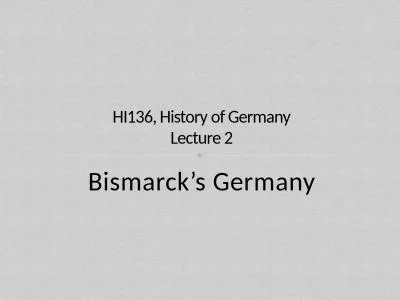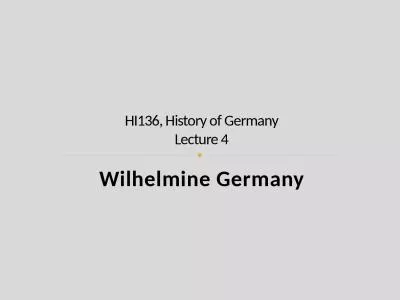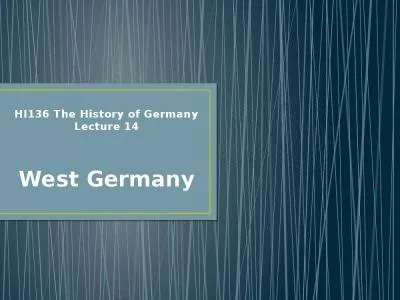PPT-HI136 The History of Germany
Author : marina-yarberry | Published Date : 2016-06-04
Lecture 16 1968 Background of Social Change The protests of 1968 reflected an ongoing process of social change not just in Germany but in the whole of the western
Presentation Embed Code
Download Presentation
Download Presentation The PPT/PDF document "HI136 The History of Germany" is the property of its rightful owner. Permission is granted to download and print the materials on this website for personal, non-commercial use only, and to display it on your personal computer provided you do not modify the materials and that you retain all copyright notices contained in the materials. By downloading content from our website, you accept the terms of this agreement.
HI136 The History of Germany: Transcript
Lecture 16 1968 Background of Social Change The protests of 1968 reflected an ongoing process of social change not just in Germany but in the whole of the western world Increased prosperity and living standards. Four possible outcomes…. Germany did start the war…it was all their fault. Germany was mainly responsible for the start of the war, but other countries should also be to blame. All of the major powers helped to start a war, they are all to blame in some way. Lecture . 13. Defeat, Occupation . and . Division. The Morgenthau Plan. . Drawn up by the US Secretary of State, Henry Morgenthau.. Designed to ensure that Germany could never again be a threat to her neighbours.. and Empire. HI290- History of Germany. The . Bismarckian. System. After 1871 Germany needed peace and stability in order to consolidate the gains of the Wars of Unification.. Bismarck thus needed to persuade Europe that Germany was a “satiated power”.. History of Northern Europe. Scandinavian Countries: . Vikings: 793 – 1066 AD, explored most of Europe and helped settle it. Came from Sweden, Norway, and Denmark. They were a warlike people. . (also called . Vienna, 15 May 2017. Albrecht Ritschl. Preview of Results: . One-line . Summary. Well, . unfortunately, . … No .. Does Germany Owe Greece A Debt? . 2. Two-line summary. Gross debt: some (but not enforceable. Use the events list provided and the A3 graph provided to do the following:. Draw on the 21 events positioning them on either the ‘cold’ or ‘warm’ area of the graph depending on unification & relations between the East and West. Reading . The Book Thief. In order to get the most out of reading The Book Thief, you really need to understand the historical background to the novel. . In groups, pool your knowledge of Germany during World War II and the Jewish Holocaust.. Four possible outcomes…. Germany did start the war…it was all their fault. Germany was mainly responsible for the start of the war, but other countries should also be to blame. All of the major powers helped to start a war, they are all to blame in some way. Period 5. I What is Nationalism?. A) . Nationalism. is the belief that one’s greatest loyalty should not be to a king or an empire but to a nation of people who share a common culture and history. When the nation also has its own independent government, it becomes a . Key Words:. President – . figurehead of the government.. Chancellor – . head of the government on a day-to-day basis.. Reichstag and Reichsrat – . the two chambers of the German Parliament.. Constitution – . Otto von Bismarck (1815-98). Born in . Sch. önhausen. in Brandenburg, the son of a Pomeranian . Junker. .. Educated at . Göttingen. University.. 1836: Entered the Prussian civil service.. 1839: Retired from the civil service to manage the family estates.. Lecture 2. The Franco-Prussian War (1870-71): primacy of domestic policy. War with France created an huge upsurge in German national feeling – popular pressure in the South German states to transform the wartime alliance into a permanent union.. Lecture 4. The Army and German Society. The garrison was the centre of social life in Imperial Germany.. The German Army was made up of conscripts – every male between the ages of 17 and 45 was eligible for military service.. Lecture . 14. West . Germany. The Basic Law. Based on 4 key principles:. The rule of law. Democratic participation for all. Federalism. Social welfare. Established the Federal Republic of Germany as a federal parliamentary democracy with separation...
Download Rules Of Document
"HI136 The History of Germany"The content belongs to its owner. You may download and print it for personal use, without modification, and keep all copyright notices. By downloading, you agree to these terms.
Related Documents

